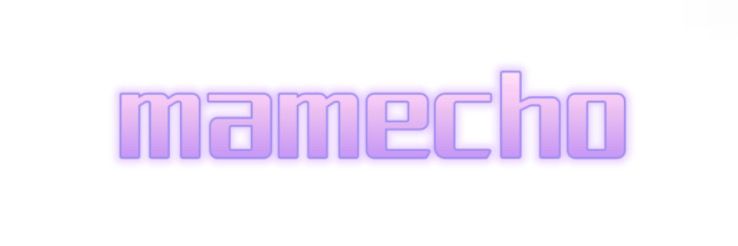Mastering Laser Marking: Techniques, Applications, and Best Practices
Mar. 11, 2025
Laser marking is an advanced technology used across various industries to create permanent, high-precision markings on different materials. This process offers numerous benefits, including durability, accuracy, and efficiency. In this guide, we will explore the different types of laser marking, their applications, key advantages, and best practices for achieving high-quality results.
1. What is Laser Marking?
Laser marking is a non-contact process that uses a high-powered laser beam to create marks on materials. The laser alters the material’s surface without damaging its structure, making it an ideal method for engraving serial numbers, barcodes, logos, and other identifiers.
This technology is widely used in industrial manufacturing, electronics, medical devices, and more due to its precision and permanence.
2. Types of Laser Marking Techniques
Different laser marking techniques are designed for specific materials and applications. Understanding these techniques helps in selecting the right method for a particular use case.
a. Laser Engraving
Laser engraving removes material from the surface, creating deep, durable marks. It is commonly used for marking metals, plastics, and wood. The engraving depth depends on the laser power and material type.
b. Laser Etching
Laser etching melts the surface material, causing it to expand and form raised markings. This process is suitable for metals and ceramics and is faster than deep engraving.
c. Laser Annealing
Used primarily for metals such as stainless steel and titanium, annealing alters the metal’s color without removing material. This method is ideal for applications where maintaining surface integrity is essential.
d. Laser Ablation
Laser ablation removes thin layers from a material's surface, often used for cleaning, coating removal, or preparing surfaces for further processing.
e. Laser Bonding
This technique uses a bonding agent that reacts with the laser, creating a high-contrast mark on glass, ceramics, and metals. The result is a permanent and wear-resistant mark.
3. Applications of Laser Marking
Laser marking is widely used across various industries due to its precision, speed, and ability to produce permanent markings. Some key applications include:
a. Industrial Manufacturing
Laser marking is used for engraving part numbers, serial numbers, and barcodes to ensure product traceability and compliance with industry standards.
b. Medical Devices
Medical instruments and implants require permanent, biocompatible markings for identification and regulatory compliance. Laser marking ensures these marks remain intact even after repeated sterilization.
c. Aerospace and Automotive
Parts in aerospace and automotive industries require permanent markings for traceability and quality control. Laser marking withstands harsh environmental conditions, making it ideal for these applications.
d. Electronics and Semiconductors
Electronic components often require micro-marking for identification and tracking. Laser marking provides precise, damage-free labeling for circuit boards and microchips.
e. Jewelry and Personalization
Laser engraving is widely used for customizing jewelry, watches, and other luxury goods with names, initials, or intricate designs.
4. Advantages of Laser Marking
a. High Precision and Accuracy
Laser marking delivers fine, detailed markings with sharp edges, making it suitable for intricate designs and small components.
b. Permanent and Wear-Resistant
Unlike printed or ink-based markings, laser marks are resistant to wear, chemicals, and extreme temperatures, ensuring long-term durability.
c. Fast and Efficient Process
Laser marking operates at high speeds, making it an efficient solution for mass production without compromising quality.
d. Non-Contact and Damage-Free
Since laser marking is a non-contact process, it reduces mechanical stress on the material, preventing potential damage.
e. Environmentally Friendly
The process does not require inks, chemicals, or consumables, reducing waste and environmental impact.
5. Factors Affecting Laser Marking Quality
Achieving high-quality laser markings depends on several factors:
a. Material Type
Different materials absorb laser energy differently. Metals, plastics, ceramics, and glass all require specific laser settings for optimal results.
b. Laser Power and Speed
Adjusting the laser’s power and speed influences the depth, contrast, and clarity of the marking. Fine-tuning these parameters ensures the best output for each material.
c. Surface Condition
A clean, smooth surface enhances marking quality. Contaminants or uneven textures may cause inconsistencies in the final result.
d. Focus and Beam Alignment
Proper focus and beam alignment ensure sharp, precise markings. Misalignment can lead to blurry or incomplete marks.
e. Environmental Conditions
Temperature, humidity, and ventilation can impact the laser marking process. Maintaining a controlled environment helps achieve consistent results.
6. Best Practices for Laser Marking
To optimize laser marking quality and efficiency, follow these best practices:
a. Select the Right Laser Type
Different laser sources (e.g., fiber, CO₂, UV) are suited for specific materials. Choose the appropriate laser for your application.
b. Optimize Laser Settings
Experiment with power, speed, and frequency settings to achieve the best marking contrast and clarity.
c. Maintain and Clean Equipment
Regular maintenance, including lens cleaning and alignment checks, ensures consistent performance and longevity of the laser system.
d. Test on Sample Materials
Before marking large batches, conduct tests on sample materials to fine-tune settings and avoid production errors.
e. Ensure Safety Compliance
Use protective eyewear, proper ventilation, and follow safety protocols when operating laser marking systems.
7. Future Trends in Laser Marking
Laser marking technology is continuously evolving, with new advancements improving efficiency, precision, and sustainability.
a. Color Laser Marking
New techniques allow for marking metals with vibrant colors, expanding design possibilities for branding and customization.
b. High-Speed Marking with AI Integration
Artificial intelligence is being integrated into laser systems to optimize marking speed, accuracy, and automation in smart manufacturing environments.
c. Eco-Friendly Laser Marking Solutions
Manufacturers are developing lasers that consume less energy while maintaining high performance, reducing the environmental impact of industrial marking processes.
Conclusion
Laser marking is an essential technology for industries requiring permanent, high-precision markings. By understanding the various marking techniques, applications, and best practices, businesses can enhance their production efficiency and product traceability. As laser technology continues to advance, it offers even greater possibilities for innovation and sustainability in manufacturing and customization.
27
0
0
All Comments (0)
Previous: None
If you are interested in sending in a Guest Blogger Submission,welcome to write for us!


Comments